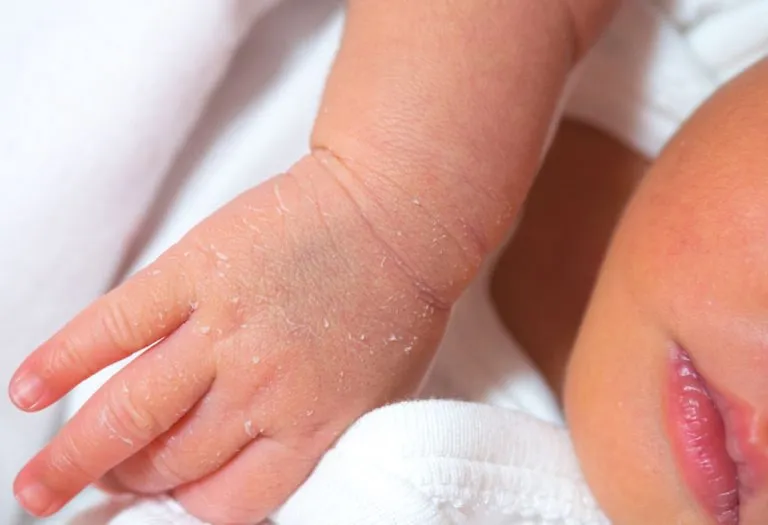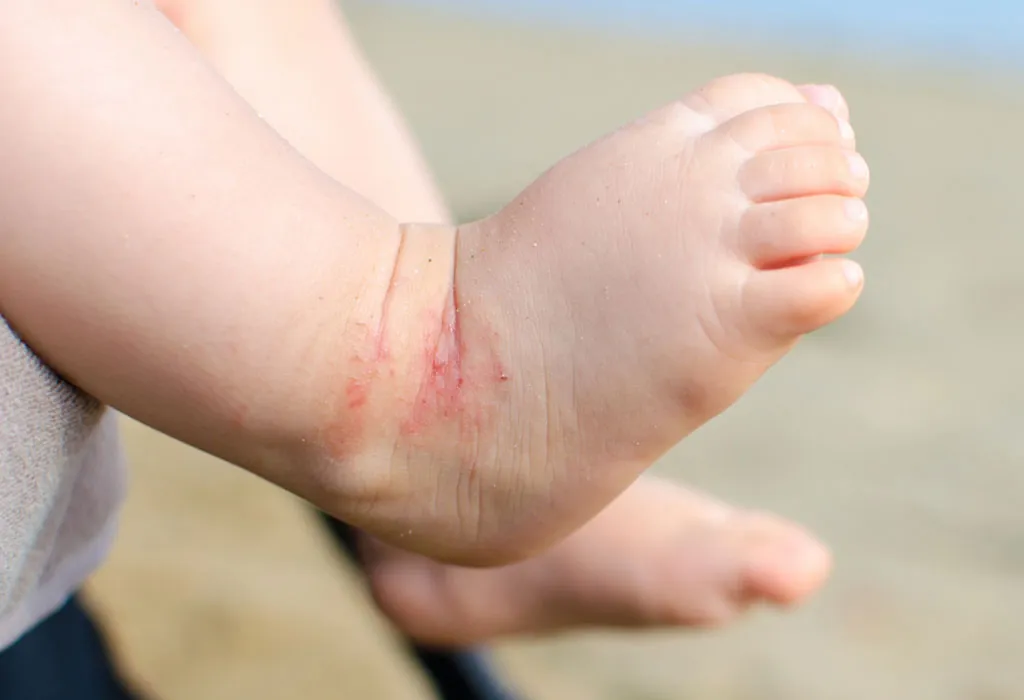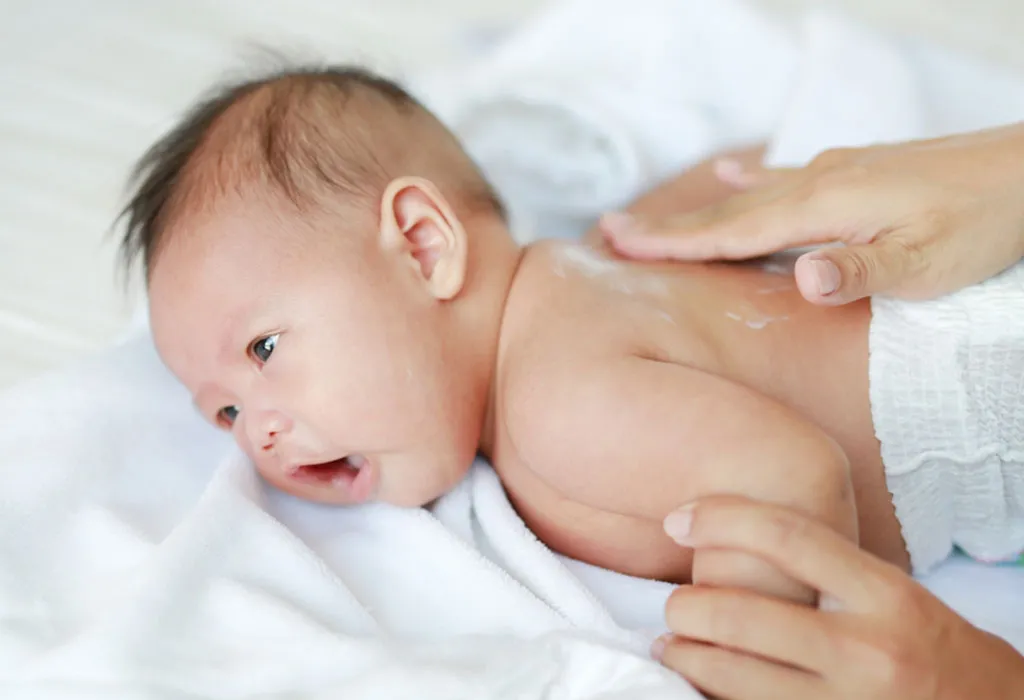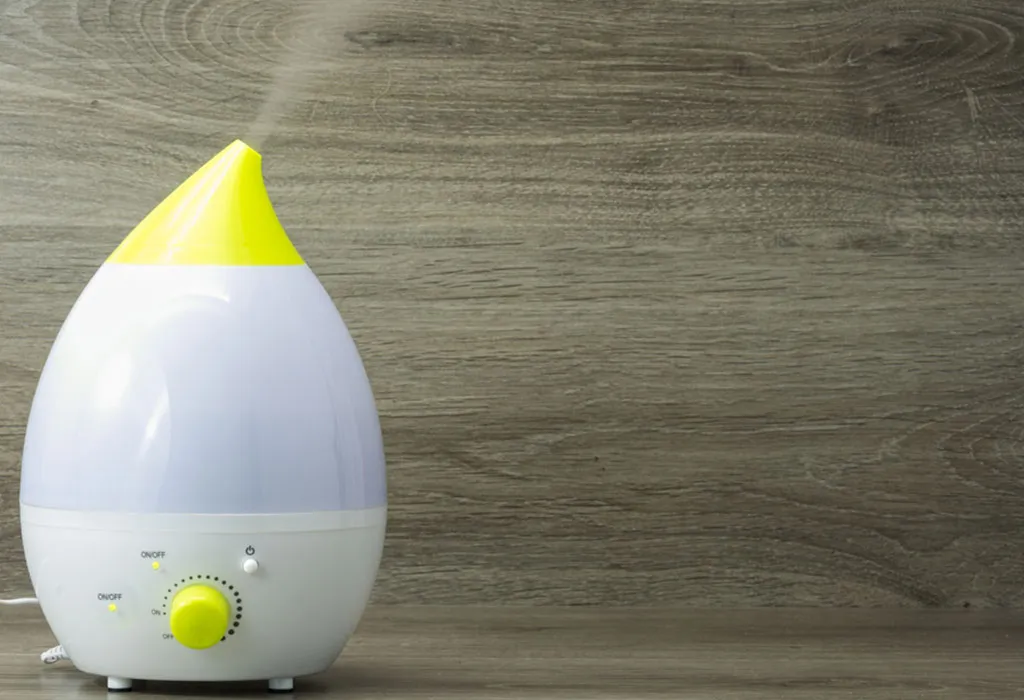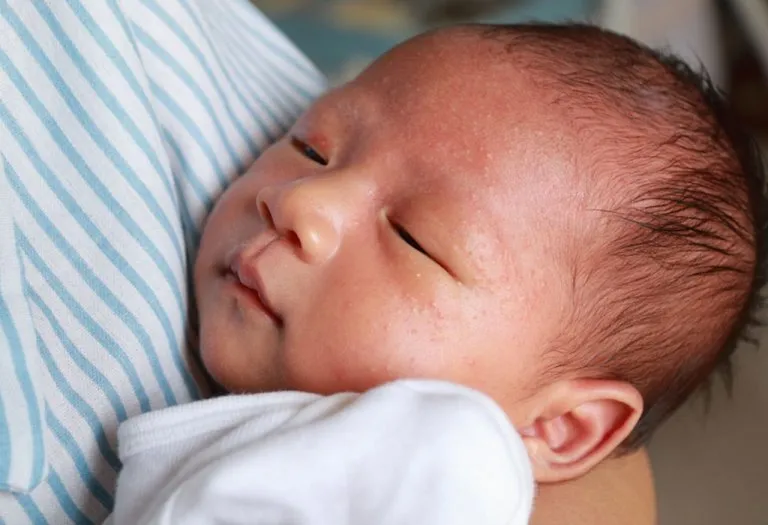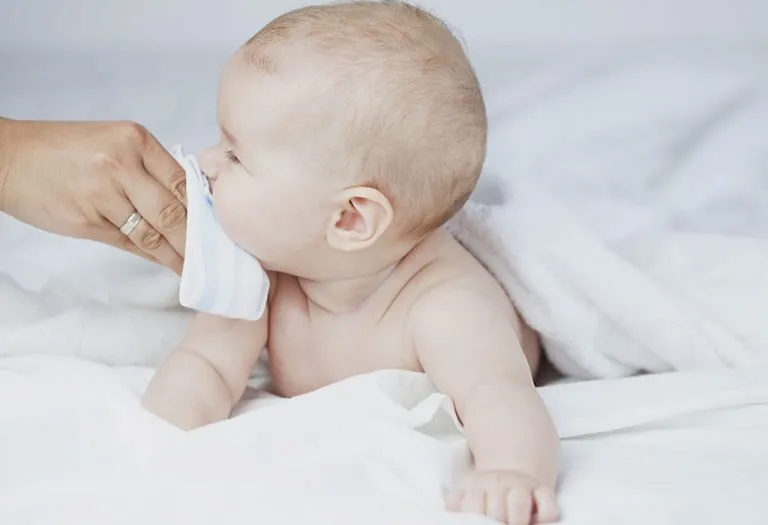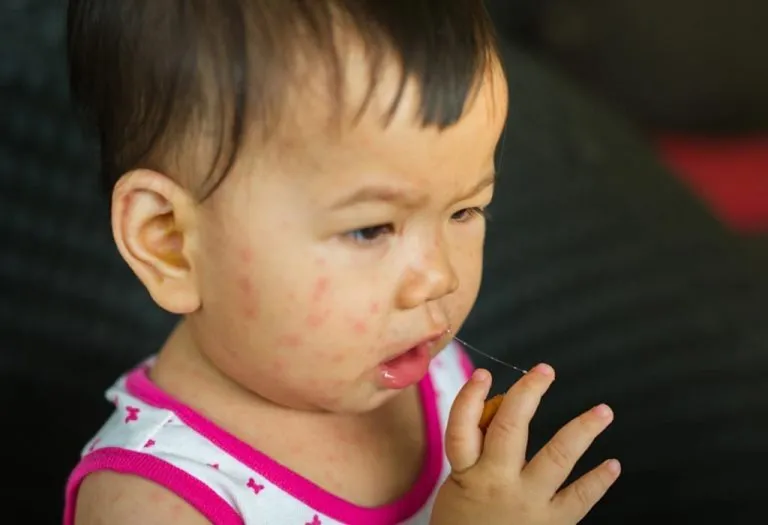Newborn Skin Peeling: Causes, Prevention, & Treatments

When a baby is born, many changes happen in the baby’s body. These, at times, might manifest in the form of dry skin and skin being peeled off. Baby head skin peeling can sometimes make parents terrified of what is happening. Newborn skin peeling is a common phenomenon that often worries new parents, but it is a natural process in most cases. This peeling is typically harmless and occurs due to the shedding of the outer layer of skin, which was protected by vernix caseosa in the womb. While this process is normal, it becomes extremely important to understand why this exactly happens and treat any serious factors if they might exist. In this article, we look at the reasons behind newborn skin peeling off and share effective remedies for care.
Is it Normal for Infants Skin to Peel?
Yes, it is completely normal for an infant’s skin to peel during the first few weeks after birth. This is a natural part of their adaptation to life outside the womb (1). Peeling is more common in babies born after their due date, as their skin has had more time to mature and shed layers (2). Since newborns have delicate and thinner skin, they are more prone to dryness and moisture loss, which contributes to the appearance of flaking or peeling. This transition is a typical part of their early development and usually resolves on its own.
What Causes Baby Skin Peeling?
In most cases, following a few days after delivery or after you come back home, your newly born baby’s skin can start getting dry or flaky. This causes it to peel off from various parts and is usually quite normal.
When a baby is born, it is covered with a lot of fluids from the mother’s body. Amniotic fluid and vernix are some of them that cover the newborn. The vernix is extremely important since it protects the baby from the fluid (2). Usually, all these fluids are wiped off the baby’s body when you give birth to your baby. The vernix might stay on the baby’s body which then peels off later in the following weeks. Premature babies have a larger proportion of vernix, hence they peel off the lesser skin.
How Much Peeling Occurs Normally?
The amount of skin peelings that occurs on the baby is dependent on when the baby was born. Babies that are overdue peel a lot more than normal or than premature babies since they have a lesser quantity of vernix on them. This usually results in baby skin peeling off fingers and toes in large amounts.
Other Serious Factors That Can Cause Infant Skin Peeling
Most peeling is quite usual in newborns. However, certain types of skin peelings can be indicative of a serious disease or condition that needs to be addressed quickly. Here are a few factors that might be responsible for skin peeling.
1. Eczema
Eczema is a well-known skin problem. Called as atopic dermatitis, this condition results in itchy red portions on various areas of the baby’s body. These are dry and usually occur on the baby’s cheeks, legs and arms, around the neck, or any areas of the body where the skin usually folds (3).
Eczema is not a disease but a kind of genetic condition. It is the body’s immune response to environmental conditions. Presence of any dust mites in the house, infections caused by viruses, heat, vaccinations, or even a change in soaps, lotions, detergents, could affect the skin and cause the reaction to happen.
How to Treat?
If your child shows symptoms of eczema, talk to your doctor who would be able to diagnose it immediately and prescribe any medication as necessary.
There are easy home remedies one can make use of to provide the baby with some quick relief. Bathing the baby with lukewarm water and using a mild soap or a mild bathing gel can be beneficial. Avoid rubbing your baby with a towel but pat instead to dry it out (4).
In case eczema starts flaring up, make use of a moisturiser to keep the skin from being dry. At times, applying breast milk to eczema ridden area is known to work too. For flares present on the baby’s cheeks, make sure they are cleaned using a cotton ball after each round of feeding.
If the flares continue or worsen, the doctor may recommend using a steroid cream to be applied on the skin.
2. Cradle Cap
The medical term for this skin condition is termed as ‘seborrhoeic dermatitis’. This is where the skin starts peeling from the armpits, eyebrows, neck and groin, but most prominently from the scalp of the baby (5).
Cradle cap is a condition that primarily takes place when the fungus or yeast present on the skin starts growing uncontrollably. In other cases, while the baby is inside the mother, various maternal hormones can stimulate this condition and cause it to happen.
When this condition starts manifesting in the form of red coloured patches and scales on the skin, many doctors treat it as an onset of eczema.
How to Treat?
In most scenarios, most cradle cap conditions go away by themselves in a couple of months without any treatment or medication. The same can eased by taking care of a few things. When bathing your baby, wash the hair and the scalp properly with shampoo. Pat it dry and use a light brush to loosen out any skin flakes that might be present.
Olive oil is known to be quite beneficial in this regard. By taking some of it in your hand, and rubbing it on the scalp of the baby, this aids in loosening the dry skin flakes and can be easily removed during a bath. Alternatively, extra virgin coconut oil can be used for the same effect (6).
Certain mothers recommend applying breastmilk on the baby’s head and then brushing it away with the scalp once it dries.
If the scalp does not go away even after these methods, contact your doctor for a solution.
3. Ichthyosis
Ichthyosis is a skin condition that is usually caused due to genetic problems. These usually result in a lot of itchy and scaly skin, which sheds rapidly. In order to diagnose this condition successfully, doctors may require a sample of skin or even carry out certain blood tests to ascertain the presence of this condition. The medical history of your family might play a vital role in helping the diagnosis (7).
How to Treat?
Unfortunately, ichthyosis hasn’t been able to be cured as of yet. The only action that can be taken is to mitigate the problems and bring some relief from it.
Babies suffering from ichthyosis should bathe only in plain water, with very less amount of mild soaps or cleansers. This has to then be accompanied by repetitive and abundant amounts of soft and bland moisturisers. Any petroleum-based products can be extremely useful in this regard (8).
When in doubt, your doctor should be your first point of contact in combating this situation or before choosing to apply any ointment or cream that you think might provide your baby relief from it.
Home Remedies for Newborn Peeling Skin
If your baby’s skin peels a lot, here are some ways to manage it.
1. Use Moisturisers
Whenever skin peeling occurs, it tends to get dry and scaly to form dry skin flakes. Hence, it is important to keep the skin moisturised to prevent any inflammation or irritation. For newborns, it is important to use a moisturiser that is gentle and hypoallergenic. Such moisturisers should be applied twice a day on the baby’s body. While applying the moisturiser, it is beneficial to massage the skin of your baby in a gentle manner. This removes any dry skin and helps the moisture reach the depths. Your doctor will tell you which brand of moisturiser is the best fit for your child.
2. Hydrating the Baby Frequently
Peeling skin takes away a lot of moisture from the body. Keeping the water levels constant in the body is absolutely necessary. The routine that has been established for breastfeeding or formula-based bottle feeding should be followed strictly and any skips should be avoided. This feeding and hydration help rebuild moisture back into the skin.
In case your baby is younger than six months, then giving your baby water is not advised. Feeding water at an early age can be harmful to its health. In such a case, sticking to the breastfeeding schedule is your best bet.
3. Keep Baths Short and Warm
Although it is important to maintain moisture in the skin, the bathing times for the baby should be short. Having daily baths is absolutely necessary to get rid of the peeling skin, but keeping your baby wet for a long time can remove the natural oils that are present in the skin. This can further make the skin drier than usual, adding to the problems.
Keeping a short 5-10 minute bath is good. Make use of warm water and a mild soap without any aromas or fragrance. Use a soft cloth to gently wipe the skin instead of rubbing it. The traditional soaps and bathing gels could irritate the skin further (9).
4. Use Chemical-free Products
Be it soaps or even detergents, any chemicals present in lotions or moisturisers can react with the delicate dry skin, and make the newborn face peeling even worse than before. There are certain soaps and detergents available in the market that are baby-friendly. Opt for those since they usually don’t have the typical harsh chemicals.
5. Install a Humidifier
Depending on where you stay, the air around could be dry and may not be right for the baby. Furthermore, the constant use of an air-conditioner robs a room of its natural humidity and makes the air dry. This dry atmosphere reduces any absorption of moisture in the baby’s skin and aggravates the peeling. For babies suffering from eczema, this is extremely bad.
By installing a humidifier in the baby’s room, the humidity in the room can return back to a normal value. This allows the skin to absorb moisture from the air and prevent it from being excessively dry.
6. Dress in Soft, Breathable Fabrics
Your baby’s clothing plays a significant role in their skin health. Dress your newborn in soft, breathable fabrics like cotton, which allows air circulation and reduces the risk of irritation. Avoid tight-fitting clothes or those made from synthetic materials that can trap heat and moisture, aggravating peeling skin.
7. Protect Against Harsh Weather
Environmental factors like cold, wind, and sun exposure can worsen dry, peeling skin. When taking your baby outside, ensure they are dressed appropriately for the weather. Use hats, mittens, or blankets to shield their skin from extreme conditions. In warmer weather, keep them in the shade and dress them in lightweight, breathable clothing to prevent overheating and dryness.
8. Oatmeal Baths
Adding colloidal oatmeal (finely ground oats) to your baby’s bath can help soothe dry and peeling skin. Oatmeal is known for its moisturising and anti-inflammatory properties, which can alleviate itching and reduce dryness. Simply mix a small amount of colloidal oatmeal into lukewarm bathwater and let your baby soak for 10-15 minutes (10).
9. Avoid Using Wet Wipes Frequently
Frequent use of wet wipes, especially those containing alcohol or fragrances, can irritate a baby’s delicate skin. Instead, use a damp, soft cloth to clean your baby during diaper changes or other times, ensuring you don’t strip the skin of its natural moisture.
How Long Does it Take for a Newborn’s Skin to Stop Peeling?
Newborn skin peeling generally lasts for the first one to two weeks after birth. During this time, you may notice flaking or peeling on areas like the hands, feet, and ankles, which is a normal part of their skin’s adjustment to the outside world. While most peeling resolves naturally, it’s important to monitor your baby’s skin. If the peeling seems excessive, lasts longer than expected, or is accompanied by other symptoms, consult a healthcare professional for advice and reassurance.
When to Consult the Doctor?
While baby peeling skin is usually harmless and resolves on its own, there are situations when consulting a doctor is important. You should seek medical advice if:
- The peeling is excessive, persistent, or lasts beyond three weeks.
- Your baby’s skin appears red, inflamed or has open sores.
- You notice signs of infection, such as oozing, crusting, or an unusual smell.
- The baby seems uncomfortable or irritable, possibly indicating itching or pain.
- Peeling is accompanied by other symptoms like fever, rashes, or unusual swelling.
FAQs
1. Can skin peeling be a sign of an allergy?
In most cases, skin peeling in newborns is a normal occurrence and not related to allergies. However, if peeling is accompanied by other signs like redness, swelling, or a rash, it could indicate an allergic reaction.
2. Should I use sunscreen on my baby’s peeling skin?
It is recommended to avoid using sunscreen on babies under six months old. Instead, protect your baby from direct sunlight by dressing them in protective clothing or using a light blanket to cover their skin when outdoors (11).
Seeing your newborn dry skin peeling can be quite scary and the entire condition in itself is quite irritating and disturbing for the baby, too. Although the initial days of the baby are accompanied by the natural peeling process of the skin, anything beyond that or combined with itchy patches could signify serious conditions. Your doctor can help diagnose these quickly and take the necessary treatments ahead. On a general note, maintaining a humid atmosphere and ensure proper skin moisturisation and body hydration keeps the skin healthy and brings some much-needed relief from the peeling.
References/Resources:
1. If Your Newborn Has Peeling Skin, Here’s What That Means; Cleveland Clinic; https://health.clevelandclinic.org/newborn-skin-peeling
2. Getting to Know Your Newborn; Nemours KidsHealth; https://kidshealth.org/en/parents/newborn-variations.html
3. Atopic eczema; NHS; https://www.nhs.uk/conditions/atopic-eczema/
4. HOW TO TREAT ECZEMA IN BABIES; American Academy of Dermatology Association; https://www.aad.org/public/diseases/eczema/childhood/treating/treat-babies
5. Cradle Cap (Seborrheic Dermatitis) in Infants; Nemours KidsHealth; https://kidshealth.org/en/parents/cradle-cap.html
6. Newborn Skin 101; Johns Hopkins Medicine; https://www.hopkinsmedicine.org/health/wellness-and-prevention/newborn-skin-101
7. Ichthyosis; NHS; https://www.nhs.uk/conditions/ichthyosis/
8. ICHTHYOSIS VULGARIS: DIAGNOSIS AND TREATMENT; American Academy of Dermatology Association; https://www.aad.org/public/diseases/a-z/ichthyosis-vulgaris-treatment
9. Navsaria. D; Bathing Your Baby; American Academy of Pediatrics; https://www.healthychildren.org/English/ages-stages/baby/bathing-skin-care/Pages/Bathing-Your-Newborn.aspx
10. HOME REMEDIES: WHAT CAN RELIEVE ITCHY ECZEMA?; American Academy of Dermatology Association; https://www.aad.org/public/diseases/eczema/childhood/itch-relief/home-remedies
11. Should You Put Sunscreen on Infants? Not Usually; U.S. Food and Drug Administration; https://www.fda.gov/consumers/consumer-updates/should-you-put-sunscreen-infants-not-usually
Also Read:
Newborn Skin Care
Facts about Baby’s Skin
Understanding your Newborn’s Skin
Was This Article Helpful?
Parenting is a huge responsibility, for you as a caregiver, but also for us as a parenting content platform. We understand that and take our responsibility of creating credible content seriously. FirstCry Parenting articles are written and published only after extensive research using factually sound references to deliver quality content that is accurate, validated by experts, and completely reliable. To understand how we go about creating content that is credible, read our editorial policy here.






